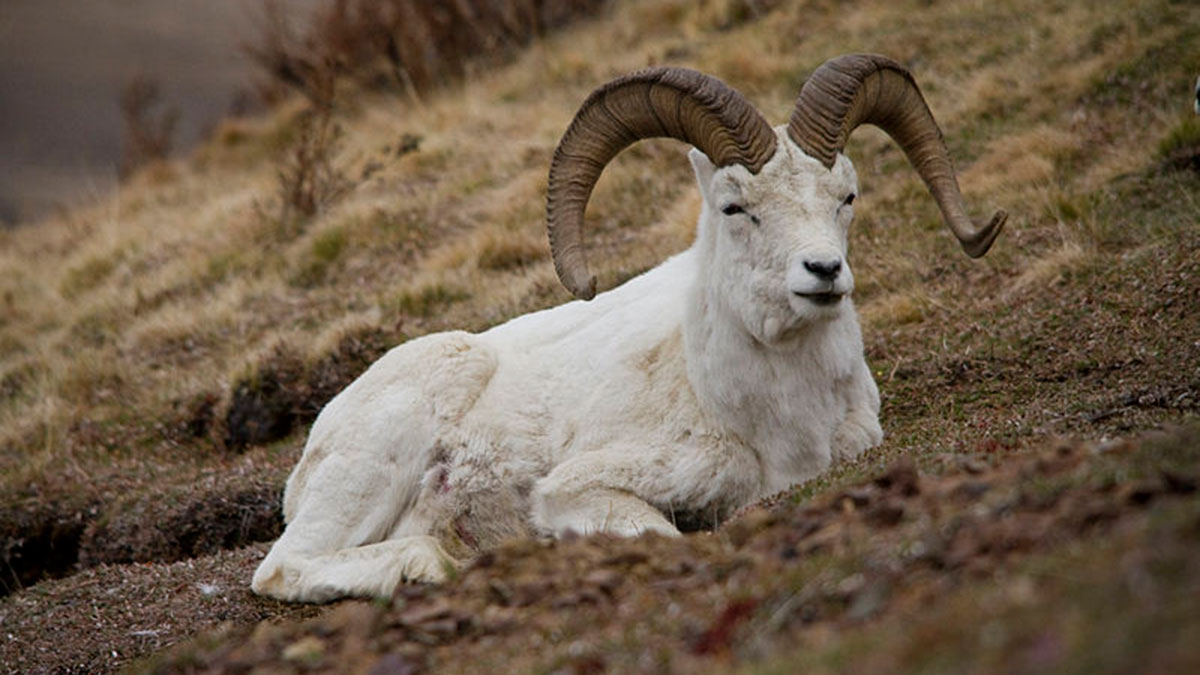 Supplied - Jacob Frank
Supplied - Jacob FrankA class project-turned research study from a University of Alberta graduate student has shed light on the evolutionary history of two subspecies of Thinhorn sheep.
Thinhorn sheep, a northern species of mountain sheep, currently has two subspecies: the light Dall’s sheep and the dark Stone sheep. New evidence from PhD candidate Sim Zijian challenges the validity of the subspecies designations, suggesting that some sheep visually classified as Stone’s sheep may be genetically Dall’s sheep.
Dark colouration indicates the rare Stone’s sheep, but since dark colours tend to genetically dominate over light colours, Zijian found that an individual that is predominantly Dall’s sheep might look darker because of a Stone sheep ancestor. This leads to the confusion when deciding subspecies designation lines and in classifying Dall’s and Stone sheep hybrids.
Genetics are helpful in showing distinctions needed to qualify a group for protection under the U.S Fish and Wildlife Service’s Endangered Species Act. Though Thinhorn sheep do not currently require protection in Canada or the Unites States, subspecies of the Thinhorn sheep are currently based on colour and not evolutionary history, which could confuse conservation efforts. Zijian’s work could be used to accurately define the two groups and help game management, as the Thinhorn sheep is an important game species for attracting hunters to the north. Effective managing practices are needed to protect the “long term survivability and vitality” of the sheep, Zijian said.
Zijian based his study on a Thinhorn sheep genetics class project from the first year of his PhD. Now in his fourth year, the biologist assessed DNA from 50 Thinhorn sheep in British Columbia, the Yukon, and Alaska, using shavings of horns hunters must send to government ministries to enforce the eight-year minimum age restriction on hunting. The government drills holes into horns to place identification plugs, a process that produces shavings that Zijian could use to study the sheep’s DNA.
The genetic story just “clicked into place,” he said.
Thinhorn sheep separated as a species from the more common Bighorn sheep around half a million years ago. A glacier then formed and separated two groups of Thinhorn sheep for thousands of years, dividing them into two subspecies. Stone sheep likely inhabited a minor refuge of ice-free habitat in Northern BC, while the Dall’s sheep inhabited a larger area, known as the Beringian refuge in Alaska and the Yukon. As time passed, each group became more genetically distinct. When the glaciers melted roughly 11,000 years ago, ranges of the two subspecies overlapped and some sheep interbred, creating hybrids.
The ability to study endless forms and how species come to be is central to Zijian’s work, he said.
“How variation comes about, and how variation is distributed over the range of a species … is the beautiful question,” Zijian said.
Current range boundaries of Thinhorn sheep herds tend to follow political, historical, or geological boundaries that are not necessarily biologically relevant. New genetic data may be used to figure out the ranges of the two genetic groups, which might differ from the ranges of the visually different groups.
“Across the range in less populated areas, we don’t really know where the (Thinhorn sheep’s) boundaries are, so this is where the genetics come in,” Zijian said.
Future plans to use 2,000 DNA samples will help Zijian refine the difference between Dall’s sheep and Stone sheep.
“The subspecies designation has to match the evolutionary history of the species, if not then they mean nothing,” Zijian said.




